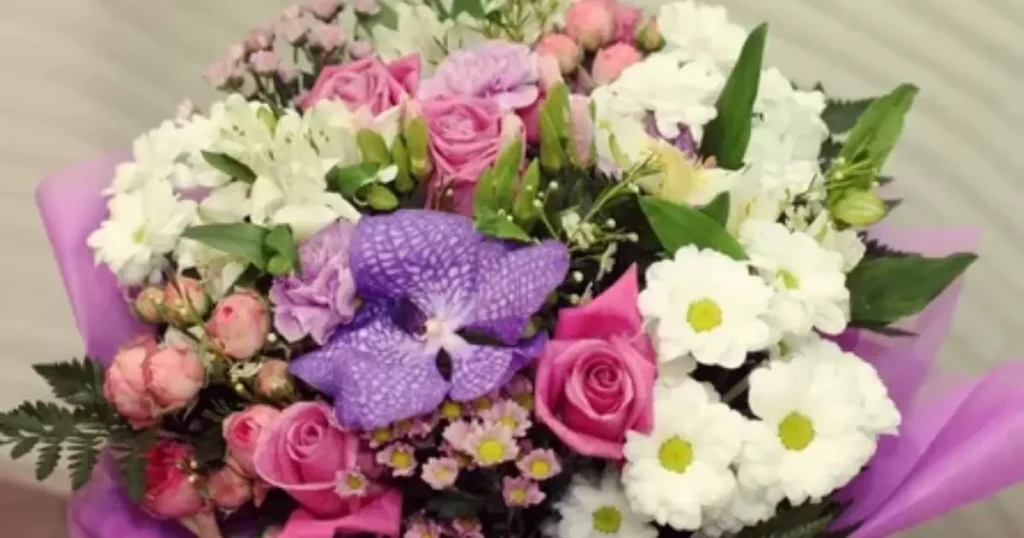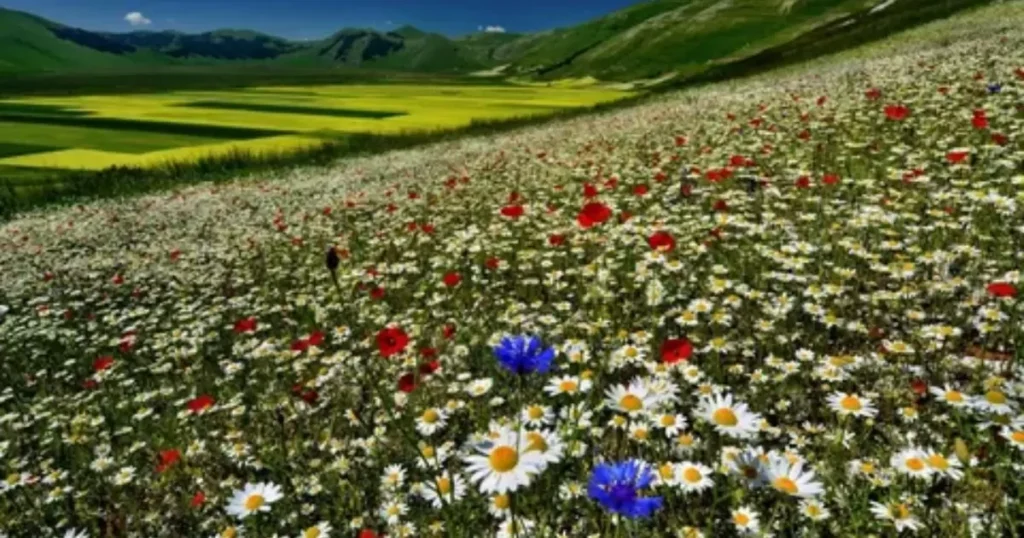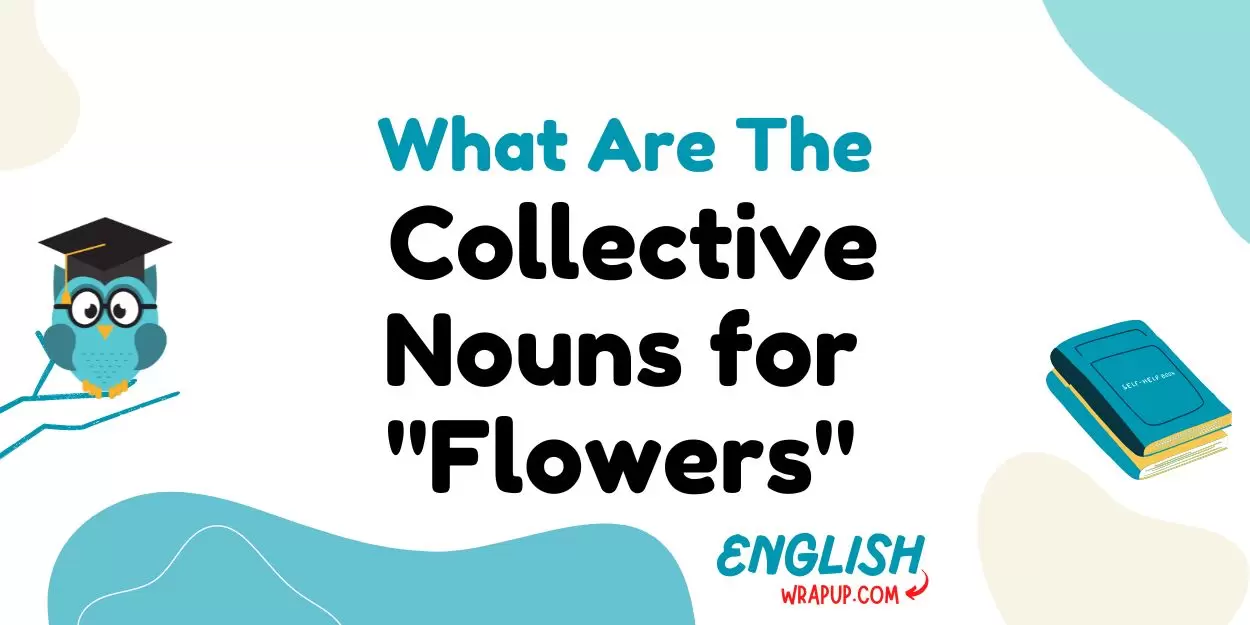Flowers, the delicate and colorful reproductive structures of plants, adorn our gardens, parks, and landscapes, adding beauty and fragrance to the world.
When observed together, these charming entities are described using various collective nouns, each offering a unique perspective on their arrangement and appearance.
In this article, we will explore the concept of collective nouns and delve into some captivating examples specifically related to flowers.
What Are Collective Nouns?
Collective nouns are words used to describe a group of individuals or things considered as a single entity. These nouns simplify our language and provide a more vivid and interesting way to refer to collections of objects, animals, or people.
For example, instead of saying “a group of birds,” we can say “a flock of birds,” which is more expressive and efficient.
Best Collective Nouns for Flowers
- A bouquet of flowers
- A garden of flowers
- A bed of flowers
- A bunch of flowers
- A cluster of flowers
- A patch of flowers
- A field of flowers
- A bloom of flowers
- A posy of flowers
- A spray of flowers
Let’s explore each of these collective nouns in more detail.
A Bouquet of Flowers
Explanation
A “bouquet of flowers” refers to a carefully arranged collection of flowers, often used for gifts or decorations.
Scenario
She received a beautiful bouquet of flowers on her birthday, each bloom carefully selected and arranged.

A Garden of Flowers
Explanation
A “garden of flowers” denotes a lush and colorful area filled with various types of flowers, cultivated for ornamental or botanical purposes.
Scenario
The botanical garden was a veritable paradise, with a garden of flowers in every hue imaginable.
A Bed of Flowers
Explanation
A “bed of flowers” describes a cohesive grouping of flowers planted closely together in a flowerbed or garden plot.
Scenario
In the front yard, a bed of flowers greeted visitors with its vibrant colors and sweet fragrance.
A Bunch of Flowers
Explanation
A “bunch of flowers” signifies a loosely arranged collection of flowers, often tied together with ribbon or twine.
Scenario
He surprised her with a simple bunch of flowers, handpicked from the nearby meadow.
A Cluster of Flowers
Explanation
A “cluster of flowers” refers to a group of flowers growing closely together, often forming a dense and colorful display.
Scenario
Among the trees, a cluster of flowers bloomed, their petals creating a vivid tapestry against the green foliage.
What Are The Collective Nouns for “Gulls”
A Patch of Flowers
Explanation
A “patch of flowers” denotes a small area of land covered with wildflowers or cultivated blooms.
Scenario
As they walked through the meadow, they came across a patch of flowers bursting with life and color.
A Field of Flowers
Explanation
A “field of flowers” describes a large expanse of land covered with an abundance of flowers, often seen in rural or natural landscapes.
Scenario
The countryside was transformed into a sea of colors during spring, as far as the eye could see, a field of flowers stretched out before them.

A Bloom of Flowers
Explanation
A “bloom of flowers” highlights the burst of growth and flowering that occurs within a specific time frame or area.
Scenario
After the rain, the garden was alive with a bloom of flowers, each petal glistening with moisture.
A Posy of Flowers
Explanation
A “posy of flowers” refers to a small bouquet or nosegay of flowers, often carried or worn for special occasions.
Scenario
As she walked down the aisle, she held a posy of flowers, their fragrance filling the air with sweetness.
A Spray of Flowers
Explanation
A “spray of flowers” denotes a loose and airy arrangement of flowers, often used in floral arrangements or decorative displays.
Scenario
The dining table was adorned with a spray of flowers, their delicate petals enhancing the ambiance of the room.
Interesting Facts About Flowers
Flowers have long been admired for their beauty, fragrance, and symbolism. They play a crucial role in pollination and reproduction of plants, attracting pollinators such as bees, butterflies, and birds.
Additionally, flowers have been cultivated for thousands of years for medicinal, culinary, and ornamental purposes, with many cultures incorporating them into traditional ceremonies and festivals.
Final Thought
Collective nouns offer a unique and creative way to describe groups of objects, animals, or people, providing insight into their characteristics and interactions.
The collective nouns for flowers not only paint a picturesque image of their natural beauty but also highlight the diversity and abundance found in the natural world.
Next time you encounter a group of flowers, think about the various ways you can describe them and appreciate the richness they bring to our language.



